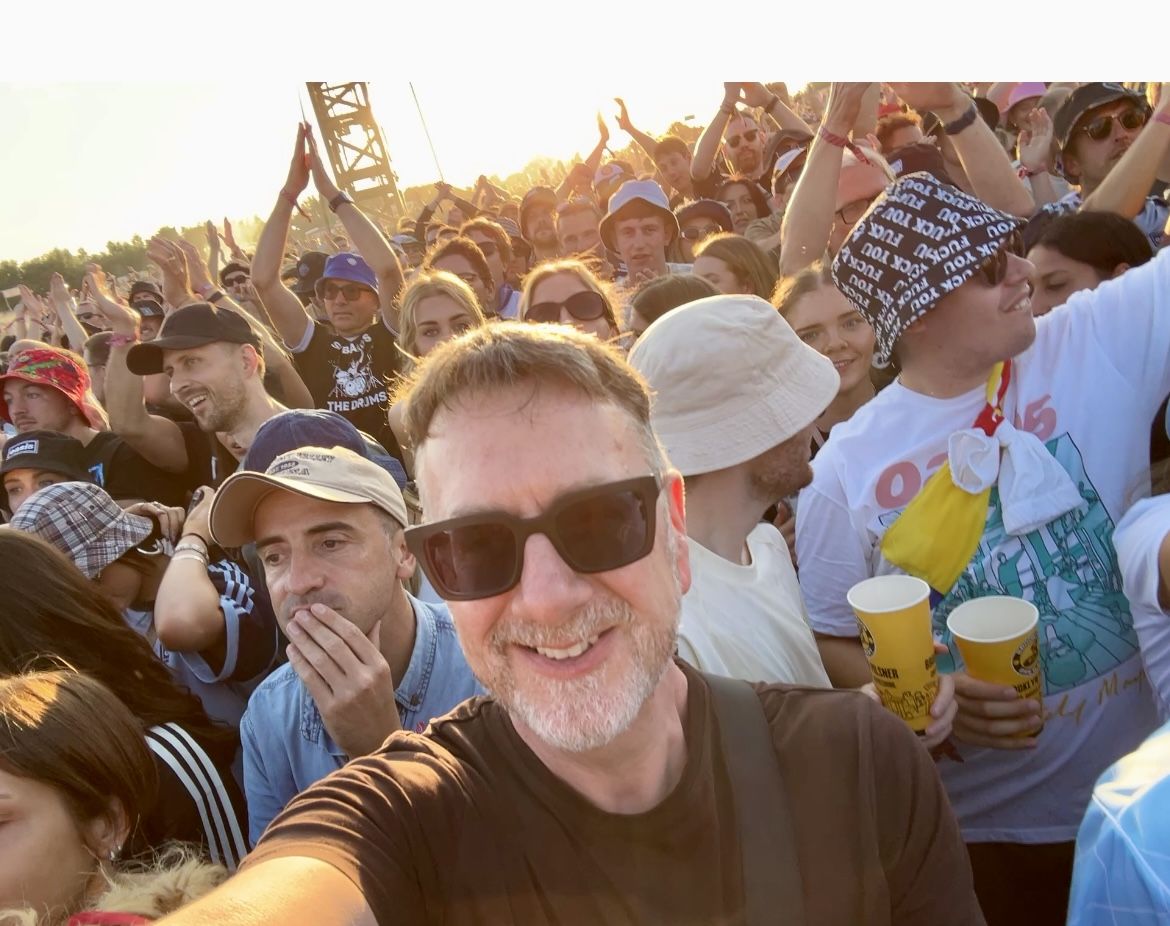What’s the Story, Morning Glory? The power of emotion, human connection and EX lessons from that concert

Lee Smith
Minutes
17th July 2025
Employee Experience
Human-Centred
People-First
Human-Centred
People-First
It’s the morning after the night before. The morning after that concert. I was there—Oasis, Heaton Park, Manchester, 16/07/25. And oh what a night it was. We came, we saw, we sang. Overhyped? Maybe. But few things in life unlock emotion quite like that.
Why does live music hit harder than any Spotify playlist? Why do the first few chords of Wonderwall send goosebumps rippling through a crowd? And how do two fiery fifty-something Mancunian brothers reduce thousands of middle-aged men to tears?
Turns out, the emotional science of music has a lot to teach us about creating more connected, human, emotionally intelligent workplaces.
Here are five Gallagher-inspired lessons to help you create emotion-driven experiences at work:
Why does live music hit harder than any Spotify playlist? Why do the first few chords of Wonderwall send goosebumps rippling through a crowd? And how do two fiery fifty-something Mancunian brothers reduce thousands of middle-aged men to tears?
Turns out, the emotional science of music has a lot to teach us about creating more connected, human, emotionally intelligent workplaces.
Here are five Gallagher-inspired lessons to help you create emotion-driven experiences at work:
1. Emotion is amplified through presence
The impact of live music is elevated because we see the emotion. Noel and Liam’s facial expressions, body language, energy—it all fuels emotional contagion (a very real biological phenomenon where we absorb and mirror the emotions of others).
💡 In the workplace:
💡 In the workplace:
- Show up with authenticity. People respond to leaders who express real feelings—excitement, concern, pride—not just slick soundbites.
- Cameras on. A live video message hits deeper than a corporate memo.
- Don't just share facts - tell a story. Like a great anthem, your communication could spark emotion, not just deliver information. People remember how you made them feel, not just what you said.
2. Shared experiences build stronger bonds
At a gig of that magnitude, something primal kicks in. Heart rates sync. Voices unite. A crowd becomes a community. That’s not magic—it’s biology. And it’s how trust is built.
💡 In the workplace:
💡 In the workplace:
- Create shared rituals—whether it's an all-hands, a Friday check-in, or a team away day.
- Don’t just communicate—design experiences. Create moments, not messages.
- Create the big and small. Collective highs reinforce belonging.
3. Multisensory, immersive comms land deeper
Live music is a full-body experience—sound, light, movement, even the vibration in your chest. The more senses involved, the more memorable it becomes.
💡 Practical tips:
💡 Practical tips:
- Bring your messages to life visually—through video, infographics, or metaphor-rich storytelling.
- Make onboarding an emotional journey, not just a paperwork process.
- Use workshops, simulations, and storytelling to deepen learning and connection.
4. Emotion fuels memory, meaning, and motivation
No one remembers every email—but they remember how they felt in key moments. Music proves that emotion locks in memory.
💡 What this means:
💡 What this means:
- Anchor change comms, values and purpose in emotionally resonant stories.
- Remind people not just what they do, but why it matters.
- Support your managers - they're your frontline conductors of workplace emotion.
5. Culture is built through rhythm and ritual
A concert isn’t random. There’s a setlist. A flow. An encore. Culture is the same—it’s not about one big gesture, it’s about the journey – and the intentional patterns that shape how it feels to be here.
💡 To embed that feeling:
💡 To embed that feeling:
- Establish repeatable rituals—regular meetings, team traditions, moments of reflection.
- Reinforce values like a chorus. In music, the chorus is the emotional anchor—repeated, recognisable, and easy to sing along with. The same principle applies to organisational values: if you want them to stick, you need to repeat them often, embed them in multiple contexts, and make them feel lived-in rather than laminated. The goal is for your people to instinctively feel the values—then echo them back with pride.
- Let teams co-create their own local rhythms. Just like fans, they'll remix it to make it their own.
From managing to composing
Those of us in internal comms, HR or EX aren’t just strategists—we’re composers of tone, curators of emotion, and conductors of connection. Like music, our work isn’t just heard. It’s felt.
So next time you’re designing a moment, writing a message, or shaping culture, ask:
What would Noel & Liam do?
Because that’s where resonance lives. That’s where culture sticks. That’s where communication truly sings.
So next time you’re designing a moment, writing a message, or shaping culture, ask:
What would Noel & Liam do?
Because that’s where resonance lives. That’s where culture sticks. That’s where communication truly sings.
Interested in learning more about the people-first future of internal comms?
Join us for our upcoming webinar, Reimagining Internal Comms for the AI Age, on 23 July.
In this 1-hour webinar, we’ll introduce you to the People‑First IC Movement, built from the bold ideas in our upcoming book, People‑First Internal Communication.
📚 Discover:
In this 1-hour webinar, we’ll introduce you to the People‑First IC Movement, built from the bold ideas in our upcoming book, People‑First Internal Communication.
📚 Discover:
- Why IC must evolve—or risk irrelevance
- The 3 pressures reshaping our field: AI, expectations, and skills
- The People-First Capability Model: a new way to grow your strengths
- How to design experiences - not just messages - that connect, align, and inspire
- Real-world case stories + practical tools you can apply immediately
This isn’t theory. It’s your future.

